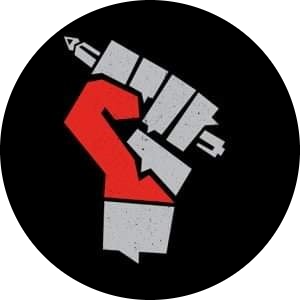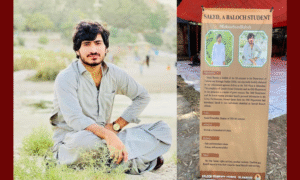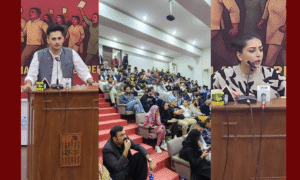In the shadows of Pakistan’s complex and tumultuous history, a dark entity has loomed large- Tehreek-e-Taliban Pakistan. The extremist group works on the nexus of religious fervor and militant mindset. But beyond this lies a fractured tapestry of factions and splinter groups within the TTP.
It would not be correct to say that TTP is one Terrorist Organization but it has become an umbrella term. During the formation years of TTP, there were more than 40 groups/factions each with a different agenda, motivation, targeted areas, and funders. Most recently in Pakistan, a large number of TTP factions are active which are attacking areas in Khyber Pakhtunkhwa. In this article, I will be discussing the 11 actively working Factions of TTP.
Lashkar-i-Islam
Founded by Mufti Munir Shakir who was born in 1969 in Khattak and later turned to be a religious clerk and used to spread his militant pro-Deobandi ideology using local pirate fm. In 2004 he founded Lashkar-i-Islam after he was ejected from Bara Tehsil due to increased tensions between two Deobandi groups. In the initial years of Lashkar-i-Islam, they worked separately but later in 2015, they announced joining TTP.
Mazar Baloch Group
Many separatist groups that emerged from Baluchistan were seeking support from other militant groups to gain more power. The Mazar Baloch group was one of the first separatist groups from the Markan District of Balochistan to join TTP and expand its operation to Baluchistan. As soon as the Mazar Baloch group joined TTP in no time it became one of the most influential groups among other groups like the Balochistan Liberation Army.
Jamat-ul-Ahrar
Jamat-Ul Ahrar is also considered one of the most violent groups among all the factions of TTP. In 2014 due to ideological clashes, Jamat-Ul-ahrar separated itself from TTP and later joined back in 2020. One of the reasons why Jamat-Ul Ahrar was seen as a deadly group was after they attacked and conducted a bomb blast in Wagha Border. Jamaat-ul-Ahrar also claimed responsibility for a suicide bombing in Lahore’s Gulshan-e-Iqbal Park on Easter Sunday. The attack targeted a crowded park, resulting in the deaths of over 70 people. In January 2016, gunmen from Jamaat-ul-Ahrar attacked Bacha Khan University in Charsadda, Khyber Pakhtunkhwa. The attack resulted in the deaths of at least 22 people, including students and staff.
Ghazi Abdul Rashid Shaheed Brigade
The Ghazi Abdul Rashid Brigade was named after the Imam Abdul Rashid Ghazi who died during the Lal Masjid operation in 2007. Post Lal Masjid this group came into existence and has been prominent in many suicidal bombings in Pakistan. Ghazi Abdul Rashid Shaheed Birgade’s group had 2 motives which were to avenge everyone involved in the Lal Masjid attack and to impose Sharia law in Pakistan.
TTP Punjab
The Tehreek-E-Taliban Punjab is another faction of TTP working in Punjab. It is a hybrid group that has members from Sipah-E-Sahaba Pakistan, Jaish-e-Muhammad, and even Lashkar-i-Jhangvi. Most of the attacks conducted by TTP Punjab were in Lahore and focused on attacking minorities like Christians. TTP Punjab militants attacked a police checkpoint in Lahore, resulting in the deaths of several police officers.
Back in 2015 TTP Punjab also claimed responsibility for a suicide bombing outside a Christian church in Lahore. The attack killed more than a dozen people and injured many more.
Lashkar-e-Jhangvi
Lashkar-e-Jhangvi is an anti-shia extremist group that had the support of Al-Qaeda before joining TTP. Within Lashkar-E-Jhangvi many splinter groups attack mostly sectarian minionorites like Shias, Hazaras, and even the Christian community of Pakistan. The main aim of Lashkar-e-Jhangvi was to cause distress in the issue of sectarian violence in Pakistan. Lashkar-e-Jhangvi was also behind the attacks which led to the death of the Iranian ambassador in Multan, the Sheraton Hotel in Karachi and various Shia Mosques across Pakistan.
Hizb-Ul-Ahrar
After many commanders left Jamaat-ul-ahrar they formed Hizb-Ul-ahrar. Hizbul Ahrar was led by Mukarram Khan, also known as Khalid Khorasani. However, he was reportedly killed in a U.S. drone strike in Afghanistan in 2020. After Mukarram Khans’ death, the group subsequently appointed a new leader, Abdul Wali Khurasani. Hizbul Ahrar had connections with the Afghan Taliban and Al-Qaeda but the objective remained the same to enforce Sharia law and avenge the Pakistani security forces.
Jaish-I-Islami
Jaish-I-Islami which was once headed by Wali-Ur-Rehman and Karwan Niamatullah. It was another faction of TTP working in the Kashmir territory and attacking the Indian-Occupied Jammu and Kashmir. The group has been involved in various acts of violence, including armed attacks, bombings, and assassinations. It has targeted Indian security forces, government officials, and civilians in its pursuit of its objectives. Jaish-e-Islami has had historical connections with other militant groups operating in the region, such as Hizbul Mujahideen and Lashkar-e-Taiba. These groups have at times coordinated efforts to achieve their common goals.
Amjad Farooqi Group
A Militant Group by the name of Punjabi Taliban Al-Qaeda affiliated itself with TTP in 2020. Amjad Farooqi was a Pakistani militant that was actively working in Afghanistan. Amjad Farooqi got under the spotlight after he was named in the Killing of Daniel Pearl who was an American Journalist. Also before joining TTP Amjad Farooqi was involved in many assassination attempts on The Former President of Pakistan General Musharraf.
Tahreek-E-Taliban Mehsud
A tribe from South Waziristan called Mehsud or Mehsud Tribe became a prominent part of TTP. Baitullah Mehsud was the leader of the Mehsud Tribe who later commanded the TTP Mehsud and started attacks on various areas of Pakistan. The primary focus of the TTP-M was to attack the areas in South Waziristan where the security forces were actively working. Baitulah Mehsud was killed in a US drone strike after which the new leadership made different changes in the organization and faced factionalism and internal disputes as well.
Tahreek-E-Taliban Uzbekistan and Turkistan
TTP has also supported agendas internationally. Like the East Turkistan Islamic Movement and the Uzbekistan Islamic Movement. Although the Uzbekistan Islamic Movement was far more deadly as compared to other groups because of its support by the Haqqani network and Al-Qaeda. Both of these factions were also involved directly and indirectly in major terrorist attacks in Pakistan but established their headquarters mostly in Afghanistan as Afghanistan has been resourceful and played as a safe house for all the factions of TTP.
However, there are many other factions of TTP like Jundallah, Musa Shaheed Karwan Group, Amjad Farooqi Group, Bajaur Taliban, Mohamd Taliban, TSNM, Mustafa Doga Madakhel Militant Group, Tehreek-E-Taliban Swat, Tehreek-E-Taliban Waziristan, Tehreek-e-Taliban Khyber but the pattern they all follow is the same the objectives they want to achieve are identical.
The difference might lie when it comes to the ideology but the parent ideology of all the factions are the same. It is also important to note that the TTP has several short and long term alliances with other terrorist organizations like Al-Qaeda. However, TTP finds ISIS its major competitor and has a big ideological difference between them. Within Pakistan TTP also sometimes have ideological differences with Separatist movements like Sindhudesh Revolutionary Army which is a separatist organization from inner Sindh.
Also it is important to know that TTP is consitunouly spreading and especially after the withdrawal of the US forces from Afghanistan TTP has become stronger. The factions are increasing day by day as TTP also faces many internal disputes and factionalism when it comes to ideology and funding.




